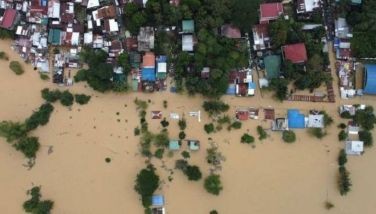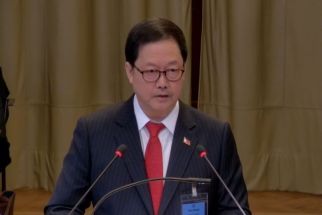Only 13 reclamation projects OKd in Manila Bay — PRA

MANILA, Philippines (Update 1, 11:59 a.m., August 15) — There are 13 approved reclamation projects in Manila Bay, which will cover only a small portion of the important fishing ground and waterway, an official from the Philippine Reclamation Authority said Monday.
“[The] 22 [reclamation projects], that’s the number of approved projects nationwide. In Manila Bay, the total is 13,” PRA Assistant General Manager Joseph Literal said in an interview with CNN Philippines.
According to Literal, only three of the 13 reclamation projects in Manila Bay “are being implemented now,” while the others are completing their pre-construction requirements. He added that the reclamation projects are concentrated in the capital region and neighboring Cavite province.
“We should have the same count [as the DENR] because we base our approvals on the issued environmental compliance certificates and area clearances. Our approved projects should be the same with the approved projects in the records of the DENR,” Literal said.
Environment Secretary Maria Antonia Yulo-Loyzaga announced last week the suspension of all 22 reclamation projects in Manila Bay to assess their environmental and social impacts as well as compliance with regulations.
According to a Freedom of Information document released by the Philippine Reclamation Authority on May 19, there were 22 Manila Bay reclamation projects in various stages of development, including the application stage.
Only the Pasay Harbour City Project and the Pasay 390-hectare reclamation project had ongoing reclamation works at the time, while the Manila Waterfront City Reclamation Project had ongoing preparatory works.
Philstar.com requested for updated lists of reclamation projects both from the DENR and the PRA.
Small coverage, massive impacts
Literal said the reclamation projects will cover only 5,000 to 6,000 hectares of the nearly 200,000-hectare Manila Bay.
“It’s less than 5%. We want to dispel the notion that Manila Bay will disappear,” he said.
Fishers’ and scientists’ groups said the PRA should not downplay the impacts of reclamation projects on coastal ecosystems and communities, stressing the environmental and socio-economic costs of dump-and-fill activities are significant.
“The issue is not only about the total size of the entire reclamation projects in Manila Bay, but the ongoing and long-term impacts to the livelihood of fisherfolk, marine biodiversity and local fisheries production,” PAMALAKAYA vice chairperson Ronnel Arambulo told Philstar.com.
According to Arambulo, nearly 26,000 fishing and coastal families in Cavite are directly affected by at least three reclamation projects.
Advocates of Science and Technology for the People also said that vessels dredging sand in Cavite that will be used as filling materials for Manila Bay reclamation projects could disturb benthic ecosystems in the seabed. Over the weekend, groups reported seeing dredging ships off the waters of Cavite despite the suspension order.
A study by the National Fisheries Research and Development found that the northern and eastern parts of Manila Bay, where reclamation projects and dredging activities are currently concentrated, have high biomass of fish eggs and larvae.
“The destruction of important fish nursery grounds along the coastal waters of Manila Bay will affect our fisheries production,” said Jerwin Baure, a registered fisheries technologist and public information officer of AGHAM.
“Therefore, the conservation and restoration of important coastal ecosystems should be prioritized in the government's Manila Bay rehabilitation program,” he added.
The DENR said it will form a group of natural and social scientists who will assess the cumulative impacts of reclamation projects.
The suspension of reclamation projects came days after the United States expressed concern about a reclamation project linked to China Communications Construction Company, a firm that it blacklisted for its role in constructing and militarizing islands in the South China Sea.
- Latest































